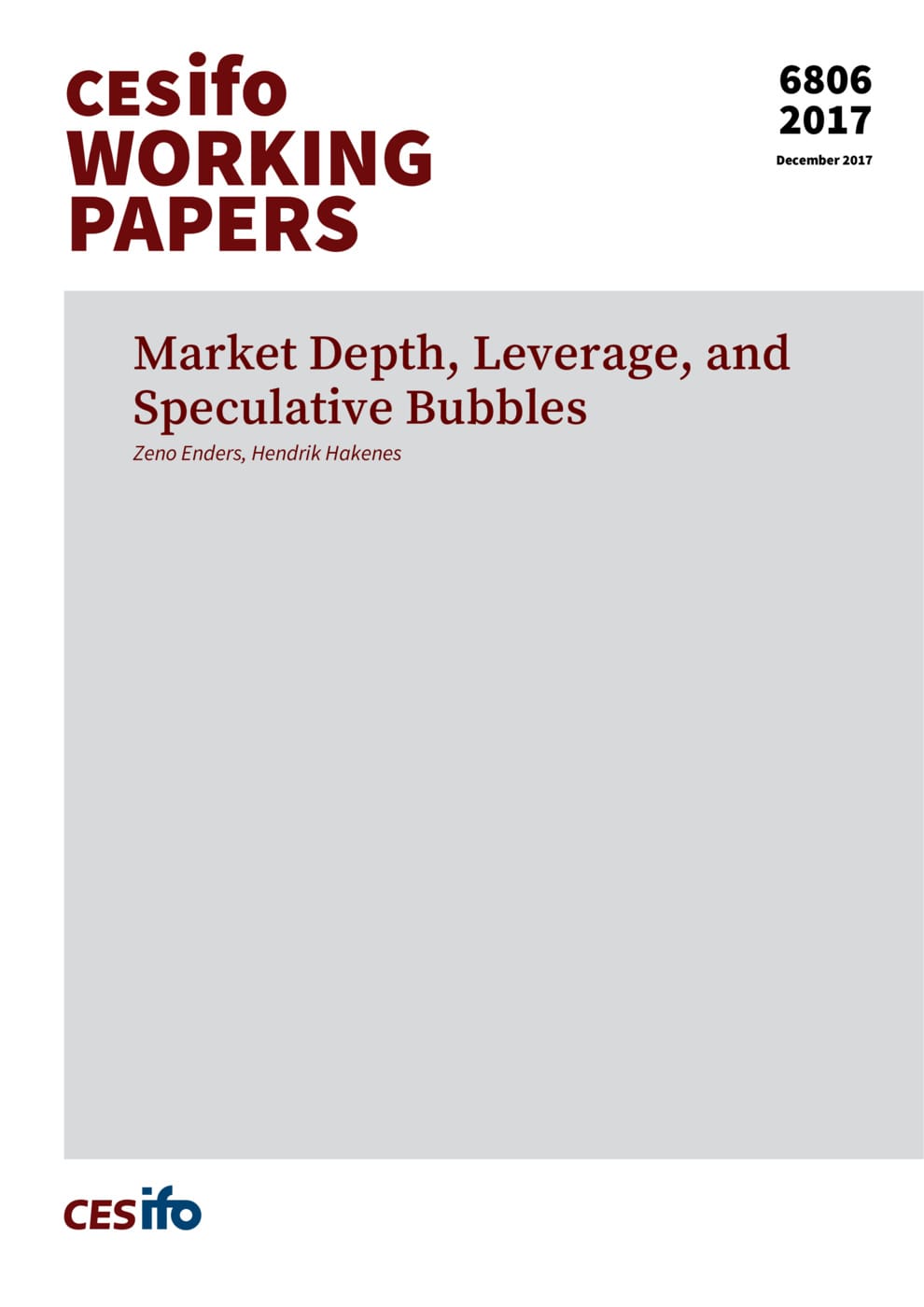Market Depth, Leverage, and Speculative Bubbles
CESifo, Munich, 2017
CESifo Working Paper No. 6806

We develop a model of rational bubbles based on leverage and the assumption of an imprecisely known maximum market size. In a bubble, traders push the asset price above its fundamental value in a dynamic way, driven by rational expectations about future price developments. At a previously unknown date, the bubble will endogenously burst. Households optimally decide whether to lend to traders with limited liability. Bubbles increase welfare of the initial asset holders, but reduce welfare of future households. We provide general conditions for the possibility of bubbles depending on uncertainty about market size, traders’ degree of leverage and the risk-free rate. This allows us to discuss several policy measures. Capital requirements and a correctly implemented Tobin tax can prevent bubbles. Implemented incorrectly, however, these measures may create the possibility of bubbles and can reduce welfare.
Fiscal Policy, Macroeconomics and Growth
Monetary Policy and International Finance